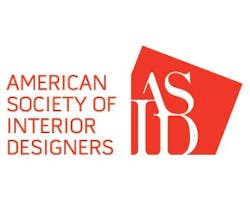As the incoming national president of the American Society of Interior Designers (ASID), I am excited to have the opportunity to communicate and share ideas with the design industry through Interiors & Sources. This is a challenging time for the design profession, yet there are many opportunities for us to be stimulated by the changing environment and to be more deeply connected as a profession.
Over the past year, ASID has invested in an extensive strategic planning process to envision a future that is focused on the collaboration and communication necessary to advance the profession.
We know that interior design can impact the human experience, and communicating that message is important to stakeholders at multiple levels. For this reason, technology is a focal point of our vision and will play a large role in our organization as a powerful tool that allows us to deliver a strong message about the impact of design; it will also provide the channel through which project solutions can be implemented.
At the same time, we understand the challenge of balancing the new innovations that inundate our daily lives. A few years back, journalist and humorist Dave Barry said that the Internet was “the most important single development in the history of human communication since the invention of call-waiting,” and maybe that’s not so off-base. I would venture to say that many of us recall a time when call-waiting was a novelty, or perhaps you recall your first car phone that lived in a carrying case large enough to check at the airport. Much has changed since then, and we will continue to experience these technological advances in all parts of our professional and personal lives.
Constant access to information has transformed our “knowledge” economy to a “creative” economy, one in which technology is ubiquitous across creative, collaborative and interdisciplinary activities. In a world driven by technology, designers can embrace these new tools not only as a means of communication, but to stay informed about products, and the environmental and social issues impacting the built environment. PageBreak
Technology has also empowered clients, giving many the ability to do their own research and even buy their own products. This change in our business model requires that design professionals not only have access to the right information, but the ability to synthesize and make sense of it in order to deliver the right solutions and curate the client experience. Continuing to develop knowledge and expertise in key areas that impact the built environment is one way in which the impact of design and the human experience is realized. The ability to make sense of information is a critical value that designers lend to a project.
To prepare our members to excel in this dynamic and evolving landscape, ASID is committed to investing in technology to developing programs and other deliverables that will assist in the 24/7 delivery of information. We are in the process of creating an integrated “dashboard” system for communications that will promote connectivity and deliver information that is tailored and relevant to our members, as well as the design community at large.
One of the first steps we have taken in this direction is the launch of the new ASID.org website, which is scheduled to go live later this year. We’ll also be introducing a series of technological enhancements for members that include:
- CEU training on software applications for members who want to improve their skillsets
- Technology venues (apps, virtual classrooms for CEUs, conferencing) for greater collaboration among members
- Systematic delivery of all relevant and related information impacting the profession, such as the dissemination of research and updated building codes
- Partnerships with technology companies to leverage the purchasing power of ASID and benefit our members’ investments in technological tools and collaborative training
As an organization, we know that seamless integration among networking opportunities is critical to collaboration, connectivity and generating successful businesses. That’s why harnessing our partnerships with industry-leading companies and organizations, providing increased access to online training and education, and promoting opportunities to build and expand business are among some of ASID’s main initiatives in the coming year.
I hope that you will expand your opportunities to network with us as we develop our technological base to collaborate and provide innovative solutions that will enhance design business opportunities.
Barbara Marini, FASID, IDEC is the chair of the interior design program at the International Academy of Design and Technology in Detroit, Mich. ASID can be reached at (202) 546-3480 or [email protected], and on the web at www.asid.org.
